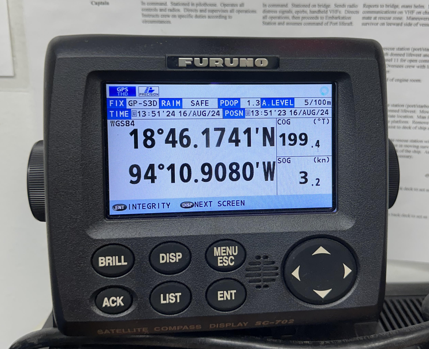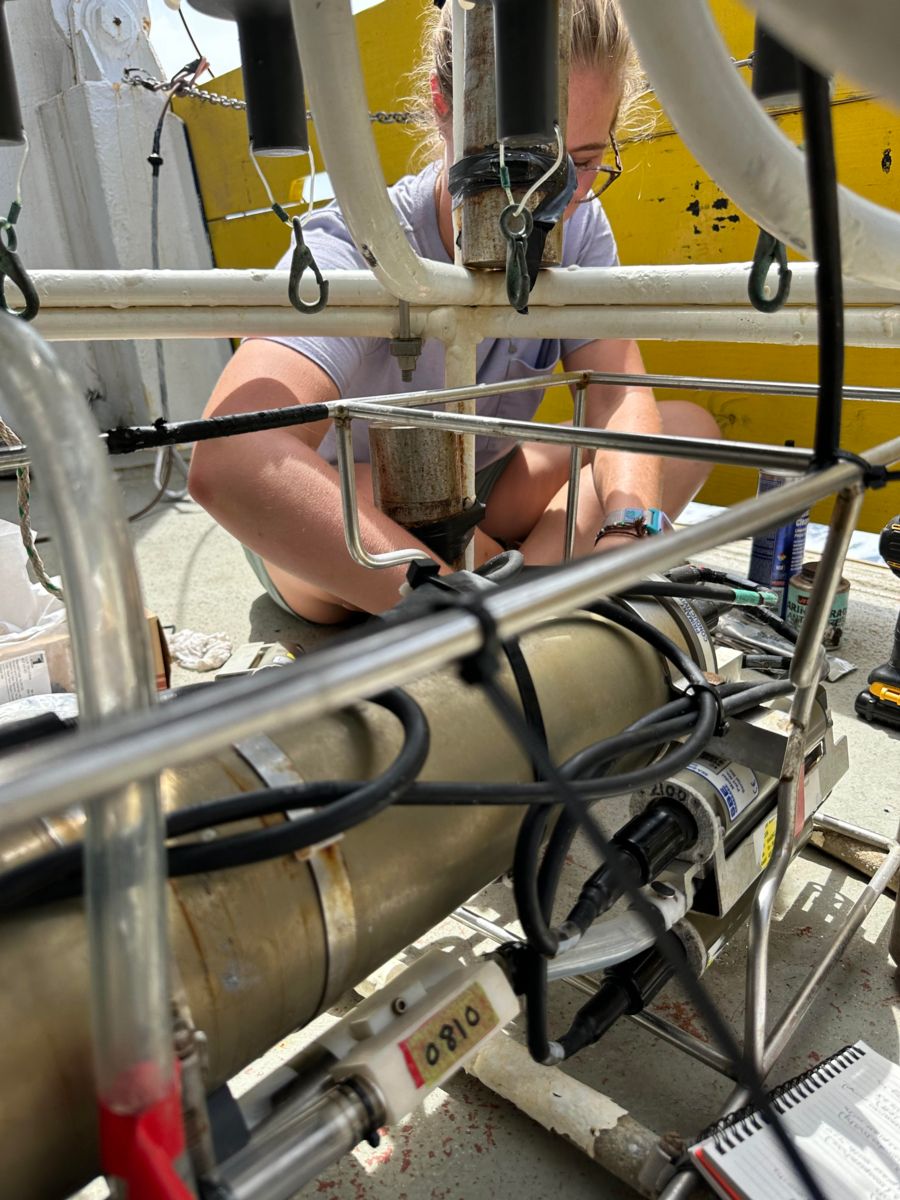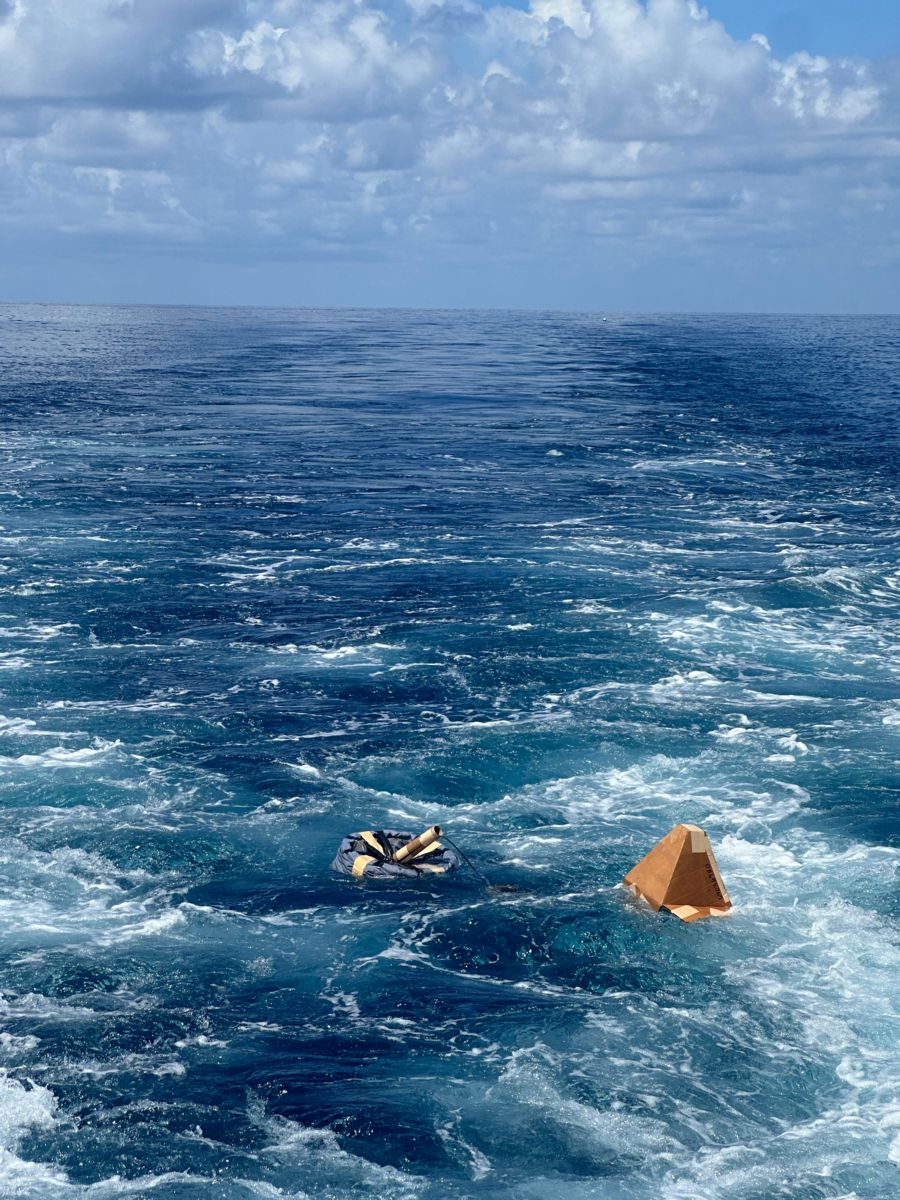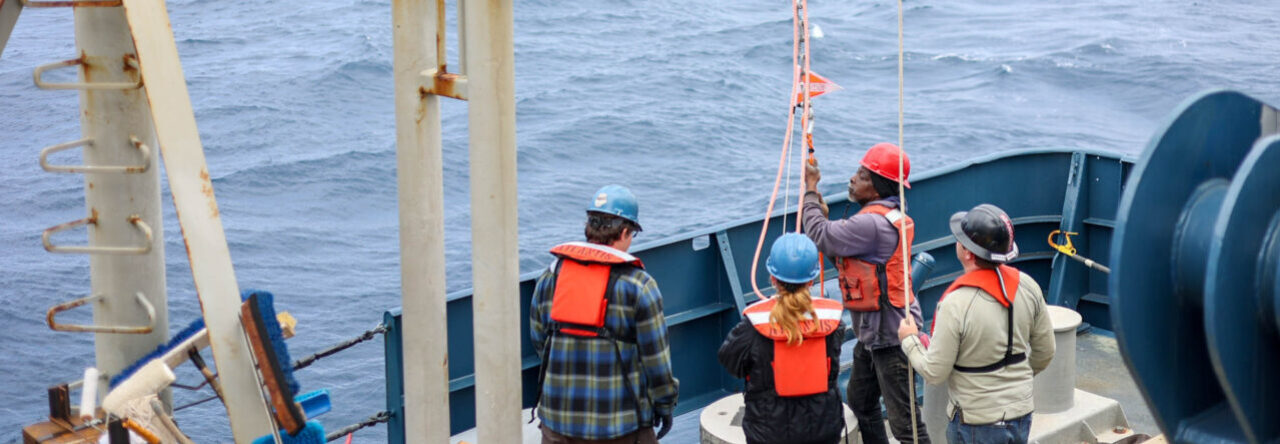August 16th marked my fourth week aboard the R/V Pelican.
We have continued to circumnavigate the Gulf of Mexico to recover and deploy acoustic moorings.
08/16/2024 was the farthest South I have ever been in my life!

This latitude is the closest to the Equator I have ever been! (Hopefully that will change as time goes on!).
There have been many long transits between stations, which has allowed for more time to ask questions and learn lots from both Maggie, my mentor, and the science crew.
Some of the things I have learned this week include:
-
How to reconfigure accessory instruments on the SBE 9 (CTD) instrument, as well as in the SeaSave software.
-
How to repair the lanyard and internal latex band of a Niskin bottle.
-
How the SBE 911plus CTD works with the SBE 32 and latch head assembly to collect water samples.
-
How different acoustic release functions are used for mooring recovery and deployment procedures.
-
How to splice a three-strand line.
How to reconfigure accessory instruments on the SBE 9 (CTD) instrument, as well as in the SeaSave software.
How to repair the lanyard and internal latex band of a Niskin bottle.
How the SBE 911plus CTD works with the SBE 32 and latch head assembly to collect water samples.
How different acoustic release functions are used for mooring recovery and deployment procedures.
How to splice a three-strand line.
An “instrument configuration” is how the sensors, which are measuring different ocean characteristics, are plugged into the SBE 9. The SBE 9 is the CTD instrument that is controlled by a program called SeaSave. (Remember from last week’s blog that this is the case when the CTD Rosette is on a conducting wire).
This instrument configuration has to be defined in a configuration file in Seasave because it tells the program how to process the data stream.

Me switching out a temperature sensor on the CTD Rosette.
In my “Week 1: R/V Pelican (Athena Abrahamsen)” post, I briefly explained how a Niskin bottle can work. I would like to clarify that when I was talking about the “elastic cord” that causes the bottle to close, the correct term for this “elastic cord” is a “lanyard”. The lanyard is an essential component as it is looped around the triggers of the latch head assembly. The latch head assembly will be described in more detail later. 🙂 The internal latex band is what will cause the Niskin bottle to actually close once the lanyard is no longer under tension. It is important to know how to repair these as, if they don’t work, you won’t be able to collect a water sample when needed!

A diagram of the parts of a Niskin bottle, and me adding a crimp to the lanyard attached to a Niskin bottle cap.
The SBE 911plus CTD is the system that includes every component between the CTD instruments and the deck box which connects to the SeaSave software.
The SBE 32 is what executes the command sent through SeaSave to fire specific Niskin bottles to collect water samples. Connected to the SBE 32 is a purely mechanical trigger unit, called a “latch head assembly”. This mechanism uses magnetic pulses sent by the SBE 32 to release the lanyards on the Niskin bottles and cause them to close.
Here is a link to a diagram that could help better explain this process: https://www.seabird.com/mdf_cbc920edcd404fe249dc6533da767e35ed/en/seabird_com/cms/images/blocks/11w932Schematic.gif
 Here are what the SBE 32 and “latch head assembly” look like!
Here are what the SBE 32 and “latch head assembly” look like!

The three-strand line that I practiced a splice on.
During the recovery and deployment operations, I have begun to help run slip taglines on segments of the moorings. It has been fun to get involved with deck ops!

In this picture I am running a slip tagline.
This science party has also been deploying lagrangian drifters for their colleagues. “Lagrangian” is a frame of reference used for studying the ocean. This frame of reference follows a parcel of water as it moves throughout the ocean. It has been really cool to be hands-on with these drifters as I have learned so much about them in my coursework!

A Lagrangian Drifter that was deployed off the Stern.
Next week will be my last week aboard the R/V Pelican. I am soaking up every moment I can. Talk to you next week! 🙂

